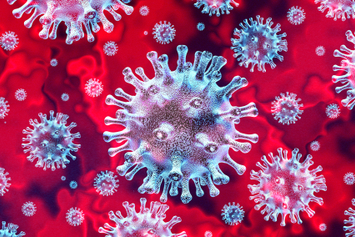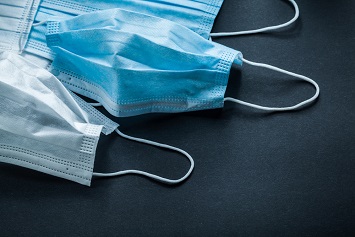Media reports of a respiratory illness caused by a newly discovered coronavirus are pervasive and relentless. How concerned should employers be about infections at your workplace or jobsite?
By the end of January, the Centers for Disease Control and Prevention (CDC) considered the new coronavirus a very serious public health threat, but the immediate health risk to the general American public remains low.
The CDC monitors the number of confirmed and potential cases of the newly discovered virus in the United States. As of January 31, there are just a handful of confirmed cases in the United States and fewer than 100 patient samples awaiting testing. Cases have been confirmed in Arizona, California, Illinois, and Washington state.
The CDC deployed teams to those states to assist health departments with clinical management, contact tracing, and communications.
Thousands of infections with the “2019 Novel Coronavirus” (2019-nCoV) were first identified by public health officials in Wuhan, China. Coronaviruses can cause diseases in birds and animals that include the common cold.
Employers should regularly check the CDC’s website to stay informed about the outbreak. The CDC continually updates its site with public information. Epidemiologists and infectious disease researchers are still learning new information about 2019-nCoV. They have not yet determined how easily the infection spreads from person to person.
Are U.S. employees at risk? The risk depends on industry and occupation. Some people, like healthcare workers caring for 2019-nCoV patients and close contacts will have an increased risk of infection. Others who may be more likely to encounter the virus include airline workers, border security personnel, and any business travelers who visit areas affected by the virus. However, the immediate health risk for the general public in the United States from 2019-nCoV is currently considered low because most people are unlikely to be exposed to the virus.
More Coronavirus Resources
Coronaviruses are common in many different species of mammals, including camels, cattle, cats, and bats. Animal coronaviruses can, but rarely do, infect people. The process of an animal contagion infecting humans is called “zoonosis,” and diseases that make the jump from animals to humans are called “zoonotic diseases.” Once a disease makes the jump to humans, it sometimes can spread between people.
Zoonotic diseases caused by coronaviruses have included Middle East respiratory syndrome (MERS), a viral respiratory illness first reported in Saudi Arabia in 2012, and severe acute respiratory syndrome (SARS), first identified in 2002 in Southern China. The 2019 coronavirus is a betacoronavirus like MERS and SARS, all of which have their origins in bats. Infectious disease researchers concluded SARS was transmitted from civet cats to humans, and MERS made the jump from dromedary camels to humans.
Many of the first patients diagnosed with 2019-nCoV in the initial outbreak of respiratory illness in Wuhan, China, had some link to a large seafood and live animal market, suggesting animal-to-person spread. Live animals were slaughtered in the market for human consumption. The market was closed for cleaning and disinfection. Chinese public health officials later reported sustained person-to-person transmission in communities in China.
Coronavirus infections commonly include respiratory symptoms such as cough, shortness of breath, and breathing difficulties, as well as fever, according to the World Health Organization (WHO). More severe cases can result in pneumonia, kidney failure, and even death.
Prevention, Response
There currently is no vaccine to prevent 2019-nCoV infection.
To prevent infection, avoid close contact with anyone showing symptoms of a respiratory illness, such as coughing and sneezing. Other recommendations to prevent infection spread include regular hand-washing, covering the mouth and nose when coughing and sneezing, and thoroughly cooking meat and eggs.
The CDC’s specific recommendations for preventing 2019-nCoV infection include the following:
- Avoid close contact with people who are sick.
- Avoid touching your eyes, nose, and mouth with unwashed hands.
- Wash your hands often with soap and water for at least 20 seconds.
- Use an alcohol-based hand sanitizer that contains at least 60% alcohol if soap and water are not available.
- Stay home when you are sick.
- Cover your cough or sneeze with a tissue, then throw the tissue in the trash.
- Clean and disinfect frequently touched objects and surfaces.
Exercise extra caution while traveling. Passengers in an airport or a cruise terminal or onboard an airplane or a cruise ship may have traveled to areas of an outbreak or had contact with others who have.
Healthcare organizations need to take special precautions both to protect the health and safety of employees and to prevent infections among clients and patients. Standard personal protective equipment (PPE) and practices include hand hygiene, eye protection, gowns, gloves, and N95 respirators. The CDC recommended healthcare workers use N95 respirators during the SARS outbreak.
Surgical masks are intended to prevent patients from infecting others and prevent healthcare workers from infecting clients, patients, and others.
Surgical masks are not effective in protecting the wearer from airborne infections. Public health officials discourage individuals and nonhealthcare employers from stockpiling N95 respirators. Nonessential stockpiling of PPE can lead to shortages of supplies at hospitals and other healthcare facilities.
If employees become sick, encourage them to:
- Stay home, except to get medical care, and call ahead to inform the caregiver about a possible 2019-nCoV infection. Sick employees should not come to work; go to school or public areas; or take taxis, public transportation, or rideshare services.
- Cover their mouth and nose with a tissue when coughing or sneezing; cough or sneeze into a sleeve.
- Separate themselves from family members and others at home.
- Avoid sharing household items such as cups, dishes, drinking glasses, utensils, towels, bedding, or other items with other people in the home; wash items thoroughly with soap and water.
- Wear a face mask when other people are in the same room and when visiting a healthcare provider.
Upcoming Webinar
March 6, 2020
1:30 p.m. to 3:00 p.m. Eastern / 10:30 a.m. to 12:00 p.m. Pacific
Presented by Alka Ramchandani-Raj, Esq.
Outbreaks
What happens in a local outbreak? The public health response may not be so public. Individual cases will be handled at hospitals and physicians’ offices. Local health departments will track cases and probably perform contact tracing to try to identify additional cases. Local health departments will also share outbreak statistics with the CDC.
Those infected with 2019-nCoV will be asked to voluntarily isolate themselves. However, most state and local health departments have the power to quarantine the sick and their close contacts.
What’s the legal authority for quarantines? Quarantine powers are derived from a state’s inherent “police power,” the authority of a state government to enact laws and promote regulations to safeguard the health, safety, and welfare of its citizens.
State and local quarantine laws and regulations vary widely. Some states have extensive procedural provisions codified in their laws and regulations for the enforcement of public health measures. Other states have broad but less specific statutory provisions. Quarantines, while rare, typically are implemented by local health departments using their authority under state law. Violating a quarantine order is a criminal offense in most states.
Federal isolation and quarantines typically happen at international ports of entry. Federal isolation and quarantine for communicable diseases are authorized by presidential executive orders and include cholera, diphtheria, infectious tuberculosis, plague, SARS, smallpox, yellow fever, and viral hemorrhagic fevers like Ebola and Marburg.
Some diseases are more contagious than others, and some produce more serious symptoms than others. For example, measles is highly contagious, much more so than the common cold and seasonal flu. In addition, one in five unvaccinated people in the United States who get measles must be hospitalized, according to the CDC, and nearly 1 to 3 of every 1,000 children who become infected with measles will die from respiratory and neurologic complications.
Infectious disease researchers are still trying to understand how contagious the 2019 novel coronavirus is. The CDC’s and WHO’s understanding of how 2019-nCoV spreads largely comes from their experience with MERS and SARS. Person-to-person spread of MERS and SARS occurred mainly via respiratory droplets produced when an infected person coughs or sneezes—similar to how the common cold, influenza, and other respiratory infections are spread. The spread of MERS and SARS between people generally occurred between close contacts.
There currently is no vaccine for the 2019-nCoV. Researchers are racing to try to develop a vaccine. However, even if researchers do develop a vaccine, it may not become widely available until after outbreaks have run their course. There also are no specific medical treatments for 2019-nCoV infections. Physicians and healthcare providers can only treat symptoms.
Separating Facts from Fears
How worried should you be about the new coronavirus? No one can know at the start of an outbreak how it will unfold. WHO identified over 8,000 cases of SARS and over 700 deaths from the virus. It also confirmed nearly 450 deaths among over 1,200 cases of MERS. So far, there have been no U.S. deaths caused by SARS and MERS.
In response to the new coronavirus, individuals and businesses should postpone any travel to China. On January 27, the CDC issued updated travel guidance for China, recommending that travelers avoid all nonessential travel to the country.
Be alert to any possible infections in the workplace, but don’t panic. Coughing and sneezing also are symptoms of other illnesses, like influenza and the common cold. Sick employees should be encouraged to stay home to avoid infecting others, regardless of the underlying illness.
Adopt as many of the CDC’s recommended prevention tips as possible—washing hands at least 20 seconds with soap and water or alcohol-based hand sanitizers whenever soap and water are not available; avoiding touching your face, mouth, and nose with unwashed hands; and avoiding close contact with sick people.
In addition, employers might consider posting fact sheets or posters of the CDC’s prevention tips in restrooms or elsewhere in the workplace. Review any company policies surrounding infectious disease prevention and response. Inform employees of how the company plans to handle the situation if an outbreak does occur, including any telecommuting options that may be available.
While stories about the 2019-nCoV have dominated the news, there also is a global measles outbreak. Unlike the new coronavirus, measles is a vaccine-preventable disease. The measles, mumps, and rubella (MMR) vaccine is available at physicians’ offices and some pharmacies.
Employers should be watchful, but look for context in the news. While the new coronavirus certainly will continue to spread, it may never show up in your community or at your workplace.


